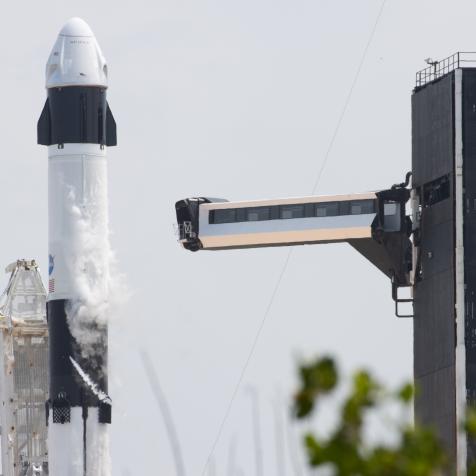
NASA/ISS
First Week Complete for Crew-1 Astronauts
NASA astronauts Michael Hopkins, Victor Glover, and Shannon Walker, along with Soichi Noguchi of the Japan Aerospace Exploration Agency launched in a new Crew Dragon spacecraft atop a Falcon 9 rocket on November 15, 2020, at 7:27P ET from the NASA Kennedy Launch Complex 39A. After a 27-hour journey, the spacecraft docked with the ISS on November 16, 2020, at 11:01P ET. Let’s see what the astronauts of NASA’s SpaceX Crew-1 mission have been up to since their arrival to the station!
We watched on Discovery and Science Channel a picturesque nighttime launch to the International Space Station of NASA’s SpaceX Crew-1 mission on Sunday, November 15, 2020. This launch marked the first of six crewed missions that NASA and SpaceX will operate together under the agency’s Commercial Crew Program. SpaceX’s crew transportation system is the first spacecraft ever to be certified for use in the return of human spaceflight from American soil.
Journey to the ISS: NASA's SpaceX Crew-1 Mission 14 Photos
(Updated: November 17, 2020) From launch preparation on land to docking with the ISS in space, here are some highlights from the NASA and SpaceX Crew-1 mission. NASA astronauts Michael Hopkins, Shannon Walker, and Victor Glover, along with Soichi Noguchi of the Japan Aerospace Exploration Agency launched in a new Crew Dragon spacecraft atop a Falcon 9 rocket on November 15 at 7:27P ET from the NASA Kennedy Launch Complex 39A. After a 27 hour journey, the spacecraft docked with the ISS at 11:01P ET.
Michael Hopkins, Victor Glover, Shannon Walker, and Soichi Noguchi have joined NASA astronaut Kate Rubins, Roscosmos cosmonaut Sergey Ryzhikov, and cosmonaut Sergey Kud-Sverchkov in space. Rubins, Ryzhikov, and Sverchkov already arrived at the space station on October 14, 2020, via a Soyuz spacecraft launched from Baikonur Cosmodrome in Kazakhstan, Russia. These seven astronauts together are Expedition 64. Crew-1 had also brought an additional passenger with them to space, Baby Yoda, from the Disney+ Star Wars series, “The Mandalorian.” Baby Yoda could be seen adorably floating as the zero-g indicator in the Crew Dragon spacecraft.
Welcome Ceremony
At 1:10A ET on Monday, November 16, 2020, after docking with the ISS, the hatches between the Crew-1 Dragon and the space station were opened. The Welcome Ceremony began at 1:40A ET. We heard Michael Hopkins, Victor Glover, Shannon Walker, and Soichi Noguchi speak to the world from the ISS for the first time. All seven crew members gathered together in the Harmony module as they received a heartfelt congratulations from NASA and JAXA officials. According to NASA, this is the first time in space station history the ISS has had a long duration crew of seven aboard the orbital outpost. In the past, the ISS accommodated up to thirteen space explorers, but only for days at a time during crew swap operations.
Roscosmos Cosmonauts Spacewalk
While Crew-1 became acquainted with the ISS on Wednesday, November 18, 2020, Expedition 64 Commander Sergey Ryzhikov and Flight Engineer Sergey Kud-Sverchkov of Roscosmos began a spacewalk staged from the Poisk module at 10:12A ET. This was the first spacewalk for the two cosmonauts and lasted over six hours. According to NASA, they prepared the station’s Russian segment for the upcoming arrival in 2021 of the Naula multipurpose laboratory.
Space Science
After spending hours unloading cargo from SpaceX’s Crew Dragon, Crew-1 began their assigned scientific studies in space for week one. Victor Glover focused on the Vection study, which helps us understand how astronauts “visually perceive and adapt to the space environment.” Soichi Noguchi spent time inside the Japanese Kibo lab module working on the Cell Biology Experiment Facility, “an incubator that can generate artificial gravity” and also set up the Avatar-X, the robotic camera experiment. Michael Hopkins studied water droplets which will ultimately “help engineers design improved spacecraft fuel and life support systems.” Shannon Walker zeroed in on ceramic manufacturing “to boost the aviation industry and the commercialization of space.”
It is safe to say that Crew-1 had a successful and busy week aboard the International Space Station!



















